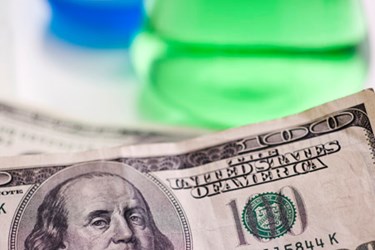Is The Sunshine Act Reducing Clinical Research Spending?

By Ed Miseta, Chief Editor, Clinical Leader

The intentions behind the passing of the Physicians Payment Sunshine Act, enacted in 2011 along with the Patient Protection and Affordable Care Act, were good ones. The Act required manufacturers of covered drugs, devices, biological products, and medical supplies to annually report to the Centers for Medicare & Medicaid Services (CMS) information regarding payments, ownership, investment interests, and other transfers of value to physicians and teaching hospitals.
The intent was to reveal any conflicts of interest that might exist, with the end goal of hopefully bringing down healthcare costs. I don’t think too many people would have a problem with that. If a pharmaceutical company is making payments of cash or gifts to a general practitioner, most would assume the reason is to encourage the physician to prescribe their drug over that of a competitor. Many would argue that taking that aspect out of the prescription drug process could have the effect of saving money for both the patient and the payers. But even the most well-intentioned acts can have unforeseeable negative results. And it now seems the well-intentioned Sunshine Act may be having the unintended consequence of cutting down on the amount of investment making its way into clinical trials.
The Sunshine Act is 35 pages of regulations, with an additional 251 pages of commentary and explanation. One focal point of the act relates to research payments. Companies are required to report those payments separately from other payments and transfers of value, and must include additional information such as the study name and principal investigator’s name.
 But now a study has shown research spending may be down as a result of the act. The August issue of Life Science Compliance Update, published by Policy & Medicine, notes an analysis conducted on the U.S. government’s Open Payments database shows U.S.-based clinical research has fallen by 32 percent in a year-over-year comparison, the first since Open Payments data started being collected. The research payments were made to physicians, teaching hospitals, and non-covered recipients. Paying doctors to favor your medicine over another might be undesirable. Paying them for their efforts to assist with the facilitation of research studies is a different situation altogether.
But now a study has shown research spending may be down as a result of the act. The August issue of Life Science Compliance Update, published by Policy & Medicine, notes an analysis conducted on the U.S. government’s Open Payments database shows U.S.-based clinical research has fallen by 32 percent in a year-over-year comparison, the first since Open Payments data started being collected. The research payments were made to physicians, teaching hospitals, and non-covered recipients. Paying doctors to favor your medicine over another might be undesirable. Paying them for their efforts to assist with the facilitation of research studies is a different situation altogether.
Most Pharma Spending Constant…Except For Research
“Under the Sunshine Act, payments are recorded not just for physicians, but for anybody who does research,” says Tom Sullivan, editor and publisher of Life Science Compliance Update. “For example, if I am a sponsor and I make a payment to a CRO, what will be counted is the amount that the CRO pays for lab work, tests, staff, faculty, or study coordinators. All of that is lumped together into one payment amount as long as that site payment is connected to a physician or a teaching hospital. It may not be a huge percentage of what is spent every year on clinical research, but trends in spending on this category can still be a good indicator of what is happening with research overall.”
From August through December 2013, the first reporting period under the new law, drug and device manufacturers reported around $1.5 billion in research payments. For that same reporting period in 2014, research payments dropped to around $1 billion. This means physicians and research organizations received $500 million less in research funding, but the large decrease also has many in the industry concerned over what could be a worrisome trend emerging.
“The majority of research payments, and hence a large portion of the drop, came in research payments to non-covered recipients, such as contract research organizations (CROs),” notes Sullivan. “The uniformity of the decrease also suggests that perhaps the decline in research spending is less of an anomaly and more of a trend.”
Two Possible Explanations
No new drug or device can help patients until it is researched and approved by FDA. A trend of significant decreases in research dollars should be of concern to patients as well as everyone in the industry. But is the decline actually an unintended consequence of the Sunshine Act?
Sullivan and co-author Matthew Chandler note manufacturers were consistent with their other payments over the two time periods. The change in food and beverage was less than one percent. Consulting fees rose by a few percentage points while travel payments decreased a small amount. As noted earlier, research payments plunged by 32 percent over the same period.
The decline was also not isolated to a specific type of recipient, specialty, or location. The entire spectrum of medical specialties saw decreases in research. Hardest hit was Hematology/Oncology, which saw research spending fall by over 50 percent. Psychiatry fell by 48 percent while Medical Oncology dropped by 34 percent. While the decrease was across all states, some did experience a more drastic drop than others.
Although the Sullivan does not identify what exactly is driving the drop in funding, he does note two possible explanations. The first is that companies are increasingly moving clinical research contracts overseas so as to avoid the requirements of the Sunshine Act. Another possibility is healthcare professionals increasingly being employed by hospitals, and having less time to devote to research. “The added burden of Open Payments could also be a disincentive to this type of collaboration,” he states. “Another possibility is simply that physician’s practices are opting out of trial participation so as not to have a large research payment being attached to their name.”
What Will The Future Hold?
If you’re wondering about research spending prior to the Sunshine Act, an article appearing in The Verge cites data from the Journal of the American Medical Association (JAMA) that reveals medical research funding from 2004 through 2012 decreased by 0.8 percent annually. Asian countries showed a 7 percent increase in research spending over that timeframe, while the U.S. contribution to global investment in medical research dropped by 13 percent.
While the U.S. remains the world leader in scientific advancements, some are concerned that lead may not hold indefinitely. In an editorial that accompanied the JAMA study, the current and past presidents of the Institute of Medicine of the National Academies noted the U.S. is at risk of losing both its leadership role and its competitiveness in scientific discovery. “One indicator after another demonstrates numerous other countries outpacing the United States in their commitment to research," they note.
Their concerns are understandable. At one time the U.S. was the world leader in automobile production and I doubt anyone at the time felt Ford, GM, and Chrysler could ever be overtaken by foreign competition. But in 2008 the CEOs of all three companies flew to Washington DC to request a taxpayer bailout. Things can and do change, and if research spending continues on this type of decline, it can happen quickly.
While government action can create disincentives to investing in research, it can also have the opposite effect. The 21st Century Cures bill, which has widespread, bi-partisan support in DC, hopes to allocate $8.75 billion in funding to the National Institutes of Health over the next five years. It also promises to expedite the approval process to get medicines to patients faster. Of course that funding is investment by the government, not the private sector. For the U.S. to remain number one in drug development will also require significant investment by domestic pharma companies.
The Orphan Drug Act is one example of government encouraging businesses to invest in research (in this case, for underserved maladies in the industry). The profit potential of developing a medicine for these patients is all the incentive pharma seems to need to garner additional investment.
Regardless of whether or not you approve of that use of taxpayer money, one thing that’s clear is that pharma and government working together will be what’s necessary to increase research investment and keep the U.S. at the pinnacle of pharma industry innovation.
